© 2026 ALLCITY Network Inc.
All rights reserved.

Few positions are more open-ended for the Denver Broncos offense this upcoming season than running back.
With C.J. Anderson being cut, Devontae Booker is the only remaining back on the roster with any real NFL experience, and he’s far from a sure thing.
That’s not to say Booker doesn’t have the talent or isn’t intriguing, but given his issues with injuries in his first two seasons as a pro and limited production, he’s still an unknown.
We’ve followed Booker throughout his career, and given how much trust the organization seems to have put in him this season, we went back to the tape to see if there are signs of a potential breakout from the former Utah back this season.
Receiving ability
An area in which Booker has stood out consistently in his brief tenure as a Bronco is as a receiver, where he’s already racked up 61 receptions for 540 yards in his first two seasons—despite appearing in limited snaps.
The third-year back is at his best receiving out the backfield and can be used in a variety of ways. Compared to all the other young backs on the roster, this is where Booker has a clear-cut advantage as only undrafted free agent Phillip Lindsay—who’s far from a guarantee to make the roster—is a proven entity in the receiving game.
Booker can be flexed out wide and has adequate speed to test linebackers on deep routes, though he could be more sudden in and out of his cuts and on double moves. There’s a lack of explosiveness as a route runner that limits him a bit, too. Watch him below as he struggles to separate vertically from a linebacker on the far right side.
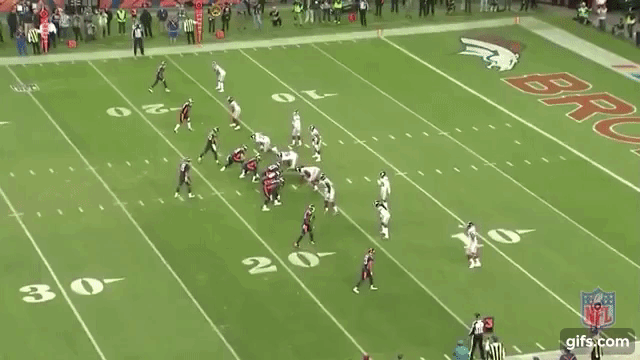
Where he’s fairly useful, though, is on screens where he has some wiggle to him that allows him to make guys miss in open space. Not so much in 2017, but in previous stints he’s shown good creativity and vision as a receiver on screen passes and seems due to break a couple for big gains in the future.
He’s also unafraid to lower his shoulder and can churn out extra yards if a defensive back is forced to bring him down.
His hands are good but not great, which is to be expected for a running back. There are a few bobbles and drops on tape that Booker could’ve avoided.
That said, he’s been very productive as a receiver and can be a factor in the passing game out of the backfield. His ability to get open underneath with his wiggle to the flats or when running wheel routes certainly make him a valuable asset.
He’s got the ability to make defenders miss in the open field and should probably be used more in the passing game this season.
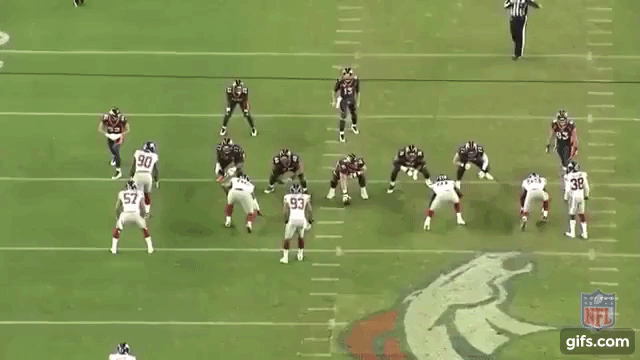
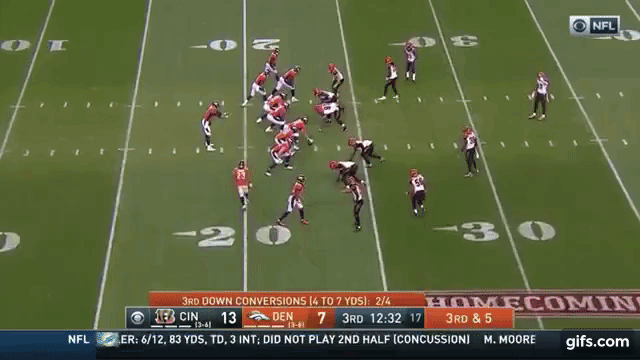
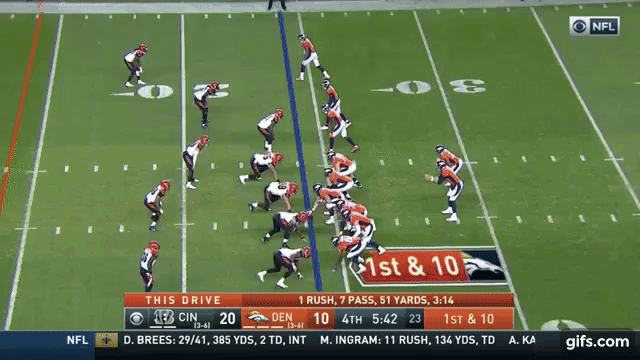
Can he be an every-down runner?
While Booker’s been productive as a receiver out the backfield, the bigger question is if he can be an all-around running back who can be the bell cow in the Broncos’ backfield.
He’s an interesting runner, who stands out most for his agility and quickness. Booker has some wiggle to his game that allows him to make the first defender miss, which is probably his best skill when he finds space.
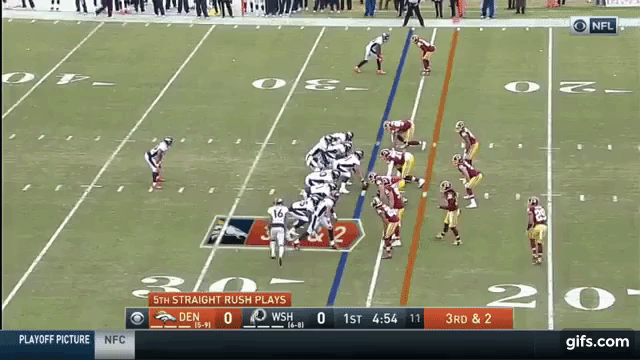
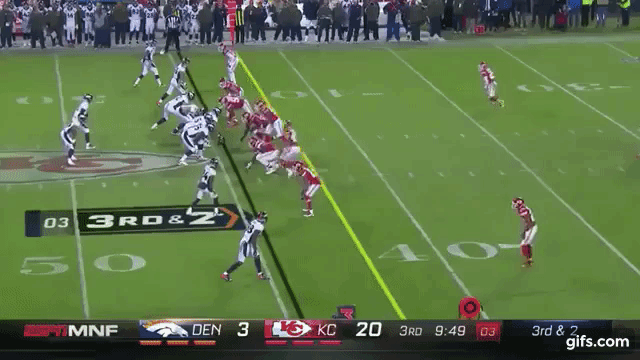
He can juke defenders to gain extra yards and sets up opponents with subtle little moves that allow him to gains space when he seems dead to rights in the backfield.
He’s also shown flashes of explosiveness to beat defenders out to the edge and breakthrough to the second level.
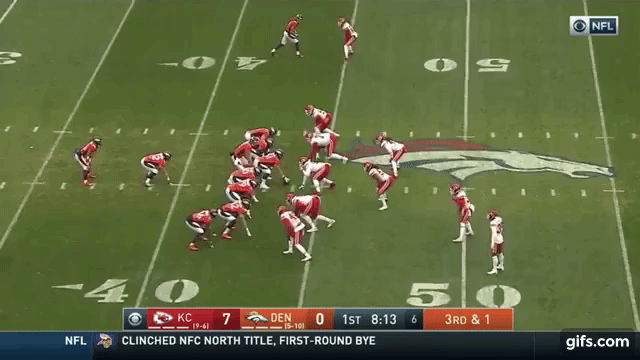
When watching his 2017 tape, his biggest question mark is his vision, as he’s not always picking the right lane and isn’t a particularly creative runner.
If he’s not running outside on designed tosses or outside runs, his burst up the middle seems average and can lead to him getting stopped far too often near the line of scrimmage. His 3.6 yards-per-carry average is fairly underwhelming and will have to improve drastically if he’s to become who Denver hopes he can be this season.
Booker is a very physical runner who loves to take on contact and prefers to try and run defenders over at the second level rather than using his quickness to make them miss, which might’ve limited him from breaking bigger runs in his brief NFL career.
That power running has made Booker a pretty good option in short yardage situations, where he’ll constantly break tackles at the line and can churn out extra yards with big lineman trying to bring him down.
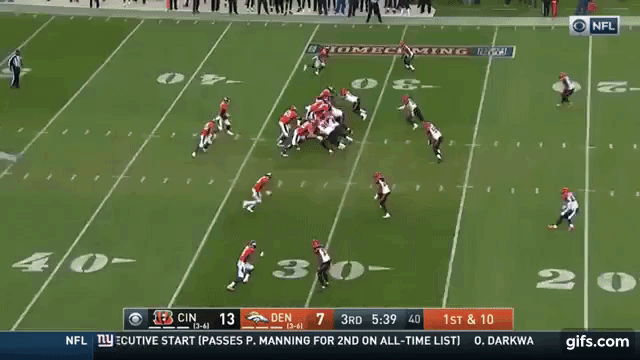
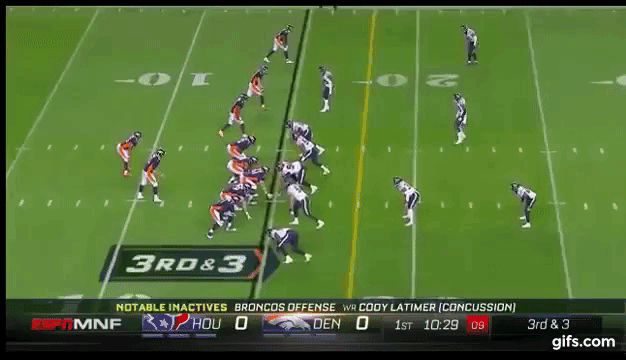
Another reason why Booker hasn’t exactly been a home run threat is that he lacks long speed. He doesn’t have a second gear and won’t run away from defenders in the open field, which also limits his impact as a big-play threat in the receiving game. Simply put, he’s not dynamic in space and isn’t a big play threat.
An underrated but critically important part of being a three-down back is the ability to pass protect. While No. 23 isn’t perfect, he’s shown himself to be good in this area as he’s willing to mix it up and set up to block blitzes in the backfield. He’s strong and plays with good leverage. With a bit more consistency and coaching, he can excel and be a trusted blocker, which is key considering he’s by far the most battle-tested blocker in Denver’s backfield.
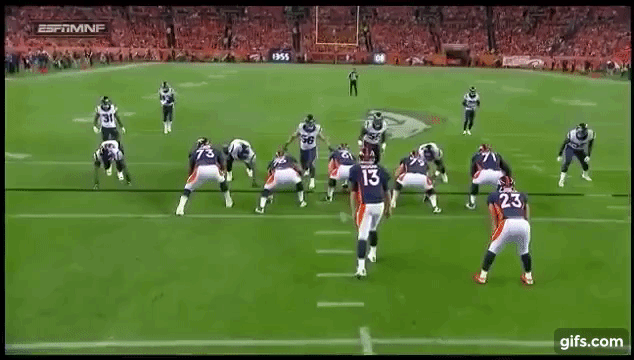
Booker was used a lot out of the shotgun in 2017 and didn’t necessarily excel, as questions about his vision and burst really stood out in such situations. With Bill Musgrave now calling the shots, expect Booker to see more looks running out of I-formations which should help him play to his strengths.
Fumbles have been a bit of an issue for Booker, too, which won’t be acceptable if he’s to take on the majority of the load as a lead back. Especially considering Booker isn’t a big play artist, he can’t be coughing up the rock. He has three times as many fumbles as he does 20-plus yard runs in his career, that ratio will have to be flipped on its head if he’s to have a breakout year.
True upside
Booker is clearly not perfect, and it’s legitimate to wonder how much injuries have limited him from playing at 100 percent this past season.
When going back to his rookie tape and as far back as his time in Utah, there was a bit more there to work with. What stood out most was that Booker was more decisive, showing sharper decision making and simply making one-cut runs and getting downhill, running with an extra dose of power.

His burst was better, too, and he was more dynamic in the passing game as a receiver as well.
It’s natural to assume that Denver’s counting on Booker to return to full strength and be closer to the version we saw in 2016 and with the Utes than in 2017.
Durability was a question mark for him coming into the league, and that’s bared out to be a big problem for him in his first two seasons with the Broncos. Getting healthy will be essential, as will utilizing him in ways that suit him best as a runner, avoiding as many shotgun looks and using him more in short yardage situations where he can be a bruiser.
In conclusion
Booker’s stock has faded a bit the last two seasons, and this will be a big year for him and the Broncos who have put a lot of faith in the 26-year-old—who’s only one year younger than the recently departed Anderson.
It’s now or never for Devontae, who should be feeling the heat with a stable of young backs nipping at his heels.
Even if he’s not special or dynamic, he has traits to be a three-down back who can be a bell cow with his combination of quickness and power added to his skills as a receiver. Putting it all together and becoming a consistent performer will make or break him this season as the starting running back job will be his to lose.
Comments
Share your thoughts
Join the conversation



